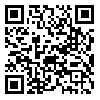BibTeX | RIS | EndNote | Medlars | ProCite | Reference Manager | RefWorks
Send citation to:
URL: http://3dj.gums.ac.ir/article-1-126-en.html
2- Department of Endodontics, Faculty of Dentistry, Guilan University of Medical Sciences, Rasht, Iran
3- Department of Maxillofacial Radiology, Faculty of Dentistry, Guilan University of Medical Sciences, Rasht, Iran
4- Faculty of Dentistry, Guilan University of Medical Sciences, Rasht, Iran
Introdouction: The mapping of ghost images of the maxilla and the nasal cavity, which are complex structures, is very important. The position of objects that create a ghost image can differ when using various devices. The purpose of this investigation was to study the mapping of ghost images of the maxilla and the nasal cavity using a Cranex D digital panoramic machine.
Materials and methods: The mapping of ghost images of the maxilla and the nasal cavity, which are complex structures, is very important. The position of objects that create a ghost image can differ when using various devices. The purpose of this investigation was to study the mapping of ghost images of the maxilla and the nasal cavity using a Cranex D digital panoramic machine.
Results: When the lead ball was located in the posterior third of the septum in the anterior-posterior direction and in the middle third above the base of the septum, a ghost image was detected in panoramic view. If the ball was placed in the posterior nasal spine, the image of the object appeared extremely elongated in a horizontal direction. The same was seen when the ball was located in the posterior third of the septum in the anterior- posterior direction and near the base of the septum.
Conclusion: This in vitro study examining ghost image mapping of the maxilla and the nasal cavity, using a Cranex D machine, revealed that the ghost envelope was limited. Digital panoramic device manufacturers have attempted to reduce ghost images, and this has now been achieved with this particular digital machine.
Received: 2015/05/21 | Accepted: 2015/05/21 | Published: 2015/05/21
| Rights and permissions | |
 | This work is licensed under a Creative Commons Attribution-NonCommercial 4.0 International License. |




